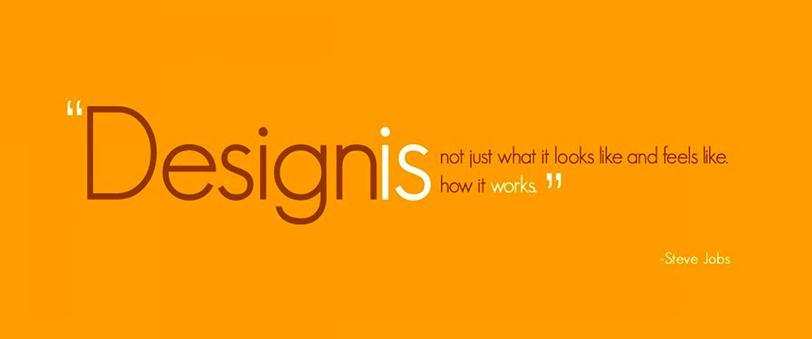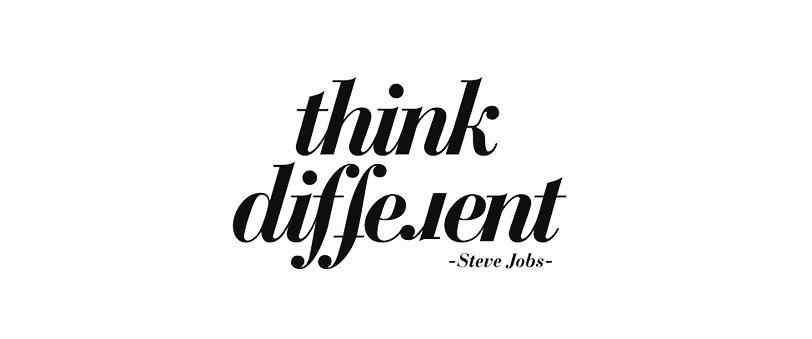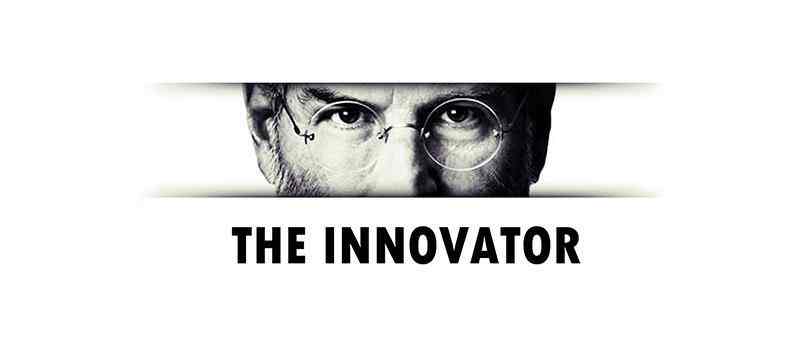Steve Jobs on Product Development
When you think about Steve Jobs, you probably think of him as a pioneer of the personal computer era, a passionate designer, and a creative genius who introduced ground-breaking products.
Through his partnership with Apple, Pixar, and NeXT, he was able to transform six industries (personal computers, music, cellular phones, animation, tablet computers, and digital publishing).
His beliefs on product (innovation), people (leadership), and promotion (marketing) revolutionized the business landscape, and he continues to be an inspiration for aspiring innovators, designers, business moguls, and corporate giants.
Here are some of his opinions on the value of a product, long-term innovation, and smart design.
1. Create with the customer’s experience in mind

While watching this 1997 video of Steve Jobs at Apple’s Worldwide Developers Conference, I was reminded of the significance of the customer experience. Jobs appears to be responding to an attack in the video, but he’s actually doing something far more interesting than what’s seen. He ponders and makes a philosophical point regarding his – and Apple’s – approach to product development.
‘I’ve always found that you’ve got to start with the customer experience and work backwards for the technology. You can’t start with the technology and try to figure out where you’re going to try to sell it.
And as we have tried to come up with a strategy and a vision for Apple, it started with: What incredible benefits can we give to the customer? Where can we take the customer? Not starting with, Let’s sit down with the engineers and figure out what awesome technology we have and then how are we going to market that?’
Former Apple and Pepsi chief executive John Sculley recounts his conversations with Steve Jobs about customer service. In his words, Steve’s approach was always centered on the customer’s experience rather than the technology. The final product had to be top-notch, and while it might not be cost-effective initially, it would be a better-looking and better-functioning one.
There are companies who have made this notion a core part of their business model and corporate culture. Three companies instantly spring to mind: Zappos, GoPro, and Tesla Motors. These companies’ owners are utterly fixated on the way their customers feel about using their products.
2. Don’t ask your customer what they want

Jobs’ product-creation philosophy was to avoid asking customers what they wanted because their answers would be predicated on what they already knew based on existing products. On the contrary, instead of focusing just on functional needs of customers, he observed what they were trying to accomplish on a social and emotional level as well. He then brainstormed with creative minds and engineers to come up with innovations to help people achieve their goals in both life and work.
Henry Ford, the man who founded the Ford Motor Company, was another industrial designer who operated under the same guiding principle. An unrelenting fervent supporter of new technology, he worked to continually improve the design and manufacturing processes of his products. In contrast to traditional methods of market research, he did not solicit feedback from customers when making product decisions.
“If I’d done what my customers wanted, then I would have built a faster horse,” he famously declared.
Having said that, I believe Henry and Steve had a keen eye for human behaviour. They’ve freed designers (and engineers) to look at different ways to commercialize new innovations and avoid making the common blunder of letting the “voice of the customer” decide the course of their evolution.
Likewise, Apple’s success with this approach can be seen in their Macintosh version, which provided a whole new computing experience for customers.
3. Creativity is about connecting the dots

Steve was of the opinion that you needed to do a ‘zoom in, zoom out’ technique. To make connections, you zoom out; to simplify, you zoom in.
If you look at Apple’s breakthroughs, you’ll see that they always occur at the confluence of several industries and technology.
The best example of this was his vision for the iPhone using 3G technology. In the early days of 3G wireless technology, he was able to connect the dots. While 2G was solely for faxing, 3G was capable of a wide range of additional tasks, including taking images.
Having designed the iPod before the iPhone, he was well aware of the trend toward smaller consumer gadgets. A phone chip in an iPod would allow individuals to transmit photos wirelessly if he could connect the dots and provide more screen real space, he reasoned.
In his own words, Steve said “Creativity is just connecting things. When you ask creative people how they did something, they feel a little guilty because they didn’t really do it, they just saw something. It seemed obvious to them after a while. That’s because they were able to connect experiences they’ve had and synthesize new things. And the reason they were able to do that was that they’ve had more experiences or they have thought more about their experiences than other people.”
4. Disruptive Innovation is the key differentiator

Unlike most companies, Jobs was constantly looking for ways to disrupt the technology industry and even Apple’s own market with low- cost, simpler solutions.
How did he ensure that his companies stayed relevant through the years?
The answer lies in his disruptive approach to innovation. Whether it’s the original Mac GUI, the iMac, the iPod, iTunes or the iPhone, Steve Jobs has changed the way we think about computers, music players, and cell phones since his time at Apple.
The Macintosh revolutionised personal computing by making it more accessible to the average person. When Apple iPods went on sale in 2001 (with an average of 100 sales per minute), Steve Jobs changed the rules of the digital music business. Following this, he launched the iTunes Music Store in 2003 which has sold one billion songs since its inception.
Steve Jobs became a global media and entertainment industry titan after Disney bought Pixar. Toy Story, their first box office smash, was made possible thanks to his use of cutting-edge 3D animation technology.
With his core belief in disruptive innovation, Jobs demoted his beloved iMac to the status of merely “another device” in 2011, when he announced that iCloud would launch a suite of products that would allow people to live without a personal computer. Thus, Jobs repeatedly demonstrated his willingness to keep creating, even if it meant sacrificing some of his company’s most successful product lines.
5. Simplify, then simplify some more

Jobs had an innate desire to make things simpler by concentrating on their main function and removing extraneous features.
For example, when it came to the iPod’s design, Jobs was constantly looking for new methods to minimise clutter. For him, it had to take three clicks to get from here to there. He even proposed they do away with the on/off switch at one point. Members of the crew were taken aback at first, but quickly came to the conclusion that the button was superfluous.
At the heart of the philosophy that guided Apple’s product design was simplicity—not just a superficial simplicity that comes from a product’s uncluttered look and feel and smooth surface—but a deep simplicity that comes from understanding every product’s essence, its engineering complexity and the function of each individual component.
“It takes a lot of hard work,” Jobs said, “to make something simple, to truly understand the underlying challenges and come up with elegant solutions.” “Simplicity is the ultimate sophistication,” Apple’s 1977 marketing brochure proclaimed, and it went on to become a basic tenet for product development that is still maintained today.
6. Design for the future

In 1983, Steve Jobs spoke to a gathering of designers in Aspen, Colorado, during the International Design Conference (IDCA). During a time when the majority of the world was uninformed of computers and much less likely to buy one, Jobs sketched out a vision for the World Wide Web, iPad, App Store, Siri and even Google Street View.
Saving time, maximizing resources, and optimizing exchange of information are the three core themes of all technological developments. By understanding the factors influencing change, Jobs could see the inevitabilities in the direction of progress.
Jobs was equally passionate about the evolution of his product’s design, believing that it should enhance its entire functionality. It wasn’t simply about font pairings, colour schemes, rounded edges, and tidy circuits; it was about how this design aesthetics improved the user experience.
“Design is not just what it looks and feels like,” he says, echoing these ideas. “How it works is design.”
7. Product before Profit

When Steve Jobs returned to Apple in 1997, he gave a rousing speech to the company’s top executives in which he outlined a fundamental premise of the product development process.
Instead of focusing on maximizing profits, he explained, the goal was to improve the design of the product. He made certain two things to be in order to better enforce this rule. Firstly, the organisation was based on job functions rather than business units.
Rather than having to worry about fulfilling financial goals or being profitable, teams could concentrate on product development and the customer experience. Secondly, top management rewards were based on overall company performance across divisions rather than revenue from a single product. This made everyone invested in the success of all their innovations and not just the ones they were responsible for.
Thus, Jobs created an entrepreneur centric culture at Apple, which has contributed significantly to the company’s success.
8. Unconventional thinking is the key mantra

As a counterintuitive revolutionary, Jobs popularised the slogan “think different” throughout his firm, displaying posters of history’s nonconformist thinkers such as Gandhi, Albert Einstein, and Pablo Picasso in support of his point of view.
He capitalized on three important and powerful elements – the power of design, intuitive user interface, and customer experience.
Over time, he learned that this was the greatest strategy for launching a cutting-edge business, cultivating a healthy corporate culture, and creating distinct competitive advantages for the company.
However, he placed design first.
Design was the corporate strategy, the product strategy, and the service strategy. It was unique because no company had ever adopted this design first approach before. Customer delight was also an important factor and to ensure quality service was provided, Apple launched the Apple store which was exclusively dedicated to the sales and service of Apple products. This created brand recognition and more importantly established brand loyalty.
9. Don’t be afraid to cannibalize your products

The remark “If you don’t cannibalise yourself, someone else will” is one of my favourites from Steve Jobs. Cannibalizing is today’s version of ongoing innovation, which is why it’s so important. To remain relevant, you must make sure your product is constantly updated to reflect changes in the market and advances in technology.
The history of the iPod and iPhone serves as a good illustration of this point.
It was 2007 when this took place.
The number of iPods sold was soaring. The iPod’s revenue had tripled since its introduction in 2001, and the company’s profit margins were at roughly 40% at that time. Apple derived half of its overall revenue in 2006 from iPod sales and related services. Although the iPod was a commercial success, Steve Jobs introduced the iPhone in 2007, fully expecting it to make the iPod obsolete.
To put this in perspective: from 2006 and 2014, Apple’s sales increased from$19.3B to $182.8B.
Is disrupting a product that generated 50% of your income and was still growing a risky move for you? Yes, absolutely! It was also a hazardous move for Apple because it wasn’t in the cell phone business before this. But before anyone else could take advantage of the opportunity, Jobs cannibalized his product.

In Summary
Job’s legacy is intertwined with his sense of aesthetics and desire for design perfection.
There were a few qualities that set him apart from the rest, including his keen eye for beauty, willingness to try new things and learn from failures, and the capacity to create works of art that were nothing short of masterful.
His introduction of aesthetics into the technological sphere has made him a sought-after digital entrepreneur and one of the best innovators of the century.
